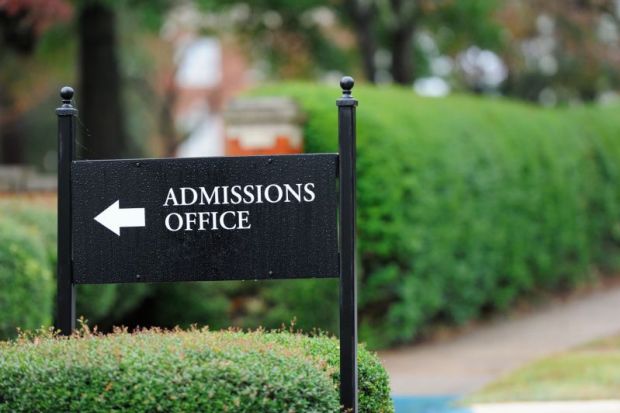In 2016, Scotland’s Commission on Widening Access proposed the use of “access thresholds” in university admissions. This means setting significantly lower entrance qualifications for students from disadvantaged backgrounds, reflecting their greater difficulty in demonstrating their ability through school exams.
At Abertay University, we were already exploring a more vigorous approach to contextual admissions in support of social mobility. We took a radical approach, setting our access threshold at three Highers rather than four, and at significantly lower levels (with corresponding changes for other qualifications). For example, for our BA in criminology, we ask applicants from the most deprived backgrounds for grades of BBC, rather than our standard offer of ABBB.
We have now been doing this for four years, having introduced access thresholds in 2017, three years ahead of other Scottish universities, so we now have a good evidence base around the impact of the policy.
What did we find? First, it did have the desired impact on the recruitment of students from disadvantaged backgrounds. Before 2017, we had taken a more conventional – and cautious – approach to contextual admissions, reducing the required qualifications by one grade in a single subject. So, for example, ABBB became BBBB or ABBC. As a direct result of our change in approach, we are now admitting 60 per cent more students from disadvantaged backgrounds than we did in 2016.
Of course, the real test of this approach is how the students do once admitted. Like most universities, our retention rate for disadvantaged students is slightly lower than for other students. We are not at ease about this difference, and we are committed to doing all we can to improve our retention of students from disadvantaged backgrounds in particular, as well as of students in general. Critically, though, our retention rate for disadvantaged students has remained the same as it was before we introduced the new policy in 2017, despite the significant increase in the number we have been able to admit. Average class grades have also remained broadly in line with previous years.
What made this work? I think there are two main factors. The first is that we got the qualifications right. This was based on the judgement of colleagues in their own disciplines, who based their decisions on many years of educating a student body that has always been extremely diverse in both social background and preparedness for university study. In some subjects, the entrance qualifications are very substantially reduced, in others less so. In all subjects, the focus is on ensuring that students have an adequate preparation for studying the Abertay curriculum.
Second, we have treated our applicants as individuals, taking into account their particular circumstances. We recognise that, in reality, the distinction between advantage and disadvantage is a nuanced one, while the decision on whether to use the access threshold is binary. There is no perfect system, but our approach goes beyond simply considering where applicants live (using information from POLAR or, in Scotland, SIMD – the Scottish Index of Multiple Deprivation). We also consider family background, school attended, whether the applicant is care-experienced, and whether they have taken part in a preparatory programme for university study. In addition, we invite applicants to indicate if they have other personal circumstances that have made it difficult for them in their school or college work.
We have learned that most applicants to Abertay from disadvantaged backgrounds do not live in low-participation or deprived areas, while most applicants from such areas are not, in their own circumstances, disadvantaged. That said, we see no conflict between focusing on individual circumstances and using area-based measures to gauge university performance in widening access. Scottish universities are judged on, and must commit themselves to, targets based on the SIMD. It is worth noting that, at Abertay, the percentage of students corresponding to each of the SIMD quintiles now varies between 19 per cent and 22 per cent, so the social and economic background of our student body is closely representative of the Scottish population as a whole.
Our new approach was a calculated risk. But it was not a leap in the dark. We had confidence in the judgement of our academic colleagues and in the ability of both our academic staff and professional services colleagues to teach and support students from a wide range of backgrounds. We acted according to our convictions, and it worked.
Nigel Seaton is principal and vice-chancellor of Abertay University, Dundee.
Register to continue
Why register?
- Registration is free and only takes a moment
- Once registered, you can read 3 articles a month
- Sign up for our newsletter
Subscribe
Or subscribe for unlimited access to:
- Unlimited access to news, views, insights & reviews
- Digital editions
- Digital access to THE’s university and college rankings analysis
Already registered or a current subscriber? Login








